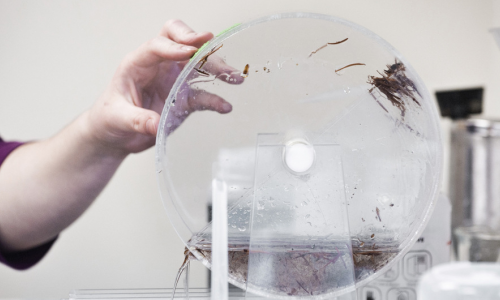
For my first co-op position, I admit I did not expect much -- I was okay with being placed in a large company amongst a team of creative professionals and given little responsibilities like designing icons and buttons, maybe designing a feature mockup or two. Deep down, however, I was actually coveting for a role which allowed me to put my design and front-end development skills to test in the real world, with actual customers (but only if my employer trusted me to do it).
In a dream come true moment, I was placed at Evident Point Software where, while working on their product Active Textbook, it was to my immense surprise that I found myself designing and programming for multiple clients and even assisting them in kickstarting a new business venture! However, as ecstatic as I was upon accepting my offer to spend eight months with them, it was also daunting to embrace the thought of being the only designer for the company with no guidance from another senior designer or someone to look over my work and help me establish better creative practices. Nevertheless, as an avid reader and movie-goer, I turned to my favorite fictional characters for inspiration; thinking that perhaps they could help me in growing as a designer, and as always they came to my rescue.
As the only designer, I was given the autonomy to define my own workflow and “call the shots” when creating and presenting my designs. In other words, I had control over who, what, where, when, why, and how I designed, as long as I met deadlines and the requests of clients (whichever came first). Unfortunately, this can easily be abused and lead one to lose track of the tasks at hand, as it happened when I often found myself taking too much time on the details of how a task should be completed rather than doing it from the get-go. For example, I tend to spend a lot of time on researching design guidelines for different platforms and how to use fancy libraries that will make my mockups come to life. In times like these, I say forget about the “sketch, wireframe, mockup, and prototype” mantra SIAT has taught you and use the power you wield to find a process that works for you and stick with it -- you and your co-workers will thank you later for your increased efficiency and productivity because it allows more time for collaboration and feedback. I found that I produced more meaningful designs by going straight to wireframes, mockups and prototype through coding instead of using software to simulate interactions, so that is the process I used throughout my work term.
Credit: inclusiveteach.com
Obi-wan Kenobi said this to Luke Skywalker about the Force while he wore a helmet, blocking his way of sight and holding a lightsaber, as a floating orb fired lasers at him. In SIAT, I was taught numerous design patterns and theories on human-computer interaction, but I realized with time that out in the field, one cannot simply cling to these theories and facts.
Most of the time I ended up relying on my gut feeling and empathy when it came to the users, stakeholders, and the world around me in general. While those patterns and theories are recommended, some of them may not be the best solution for users, might not fit the budget of the client or prove to be difficult for developers to implement. Within the variables given to you in a UX team of just one, it is up to you to devise a solution that makes sense, something that can at least reach the goal of a minimum viable product (MVP) (Gothelf & Seiden, 2016).
Even before entering university, I struggled with curbing my perfectionism and it continues to be a problem when I am designing. I have disappointed many teammates by spending too much time and effort working on a little detail that would eventually be part of a bigger picture. In the workforce, especially in a situation when “time is money”, it is important to realize when a design is done, even though it is not perfect (“What to Do When You’re the Only Designer”, n.d.). Dwelling a lot on how to achieve the most optimal solution to a technology problem creates “design debt”, which is a never-ending list of “tweaks and to-dos that could make existing features better” (“What to Do When You’re the Only Designer”, n.d., para. 18). This list can always be considered later, after releasing a product which solves the original problem for both the client and their users. In fact, designers should embrace revision and iteration instead of being repulsed by it because this is the only way for us to get better at our craft.
More often than not, with both clients and co-workers, I have always strived to meet them halfway, despite the fact that their reasoning may not agree with mine. At Evident Point, I have either witnessed or took part in a couple of lengthy discussions over design decisions. Empathy, once again, is a crucial quality any wishful user experience designer should possess (Lim, 2014). They should be flexible and keen on hearing alternative perspectives because not everyone, especially users, will understand how and why they designed software a certain way (Lim, 2014). Designers should be prepared to justify their reasoning as well as utilize the reasoning of users when ideating a new solution to a problem. That is what makes our field user-centered rather than focusing solely on visual design.
Although I was physically alone in the design department during my placement, that did not mean I do not have dependable co-workers I can talk to whenever I have trouble. They know the product ‘Active Textbook’ inside-out as expert users themselves, so their input is as valuable as any. The co-workers that are software engineers can also vouch for knowing the likelihood of implementation, as they possess the technical know-how in order to build it properly. In addition, as someone wanting to increase my proficiency in front-end languages and frameworks, there is so much to learn from them. Those in marketing and management also interact with clients and users on a daily basis, so gaining their insight is also beneficial.
A source of insight that is often overlooked is the Internet itself. A fledgling user-experience designer, albeit component, is not expected to keep track of patterns, theories, and trends alone. During slow times at work, I take it upon myself to conduct my own “professional development” by reading articles on uxdesign.cc, medium.muz.li, uxplanet.org, and medium.com itself and read replies to posts on the userexperience subreddit and ux.stackexchange.com, sometimes posting my own comments. Traditional mediums like books should not be forgotten either, as ‘The User Experience Team of One’ by Leah Buley and ‘Lean UX: Designing Great Products with Agile Teams’ by Jeff Gothelf & Josh Seiden were my go-to reference guides throughout my work term. Put together, it made my otherwise lonesome design journey more vibrant and engaging.
Beyond the Blog
-
Learn more about opportunities like Sofia's by visiting the School for Interactive Arts and Technology Co-op page















